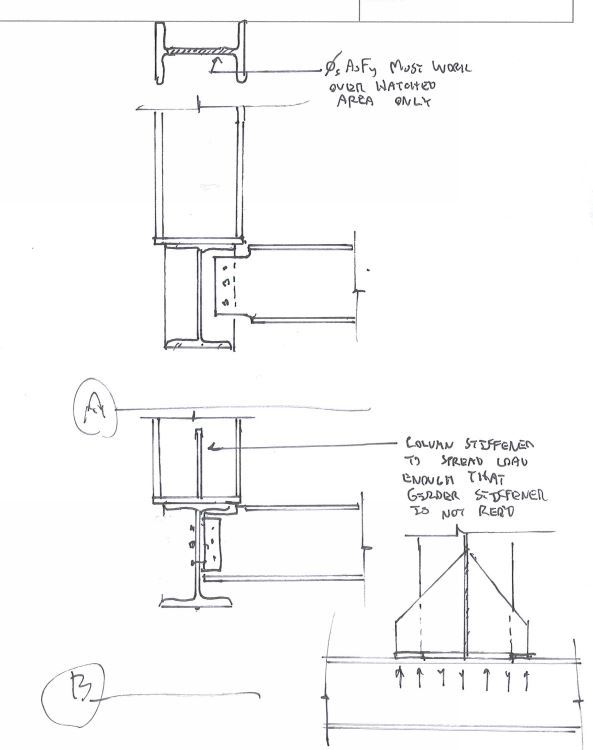aknyfg
Structural
- Jun 25, 2016
- 3
Hi folks,
I've been presented with an issue on a job where the erector did not install the stiffeners as specified. Now a beam that is transferring a column can not be accessed to install a stiffener plate on one side (wall is in the way). I've been looking through the SCM and it seems that they are very specific on the word "pairs" for the stiffeners. The commentary does not seem to help either. Does the AISC not allow for use of a single stiffener for a concentrated compressive load? Does a single doubler plate make the most sense in this situation? Thanks
I've been presented with an issue on a job where the erector did not install the stiffeners as specified. Now a beam that is transferring a column can not be accessed to install a stiffener plate on one side (wall is in the way). I've been looking through the SCM and it seems that they are very specific on the word "pairs" for the stiffeners. The commentary does not seem to help either. Does the AISC not allow for use of a single stiffener for a concentrated compressive load? Does a single doubler plate make the most sense in this situation? Thanks

